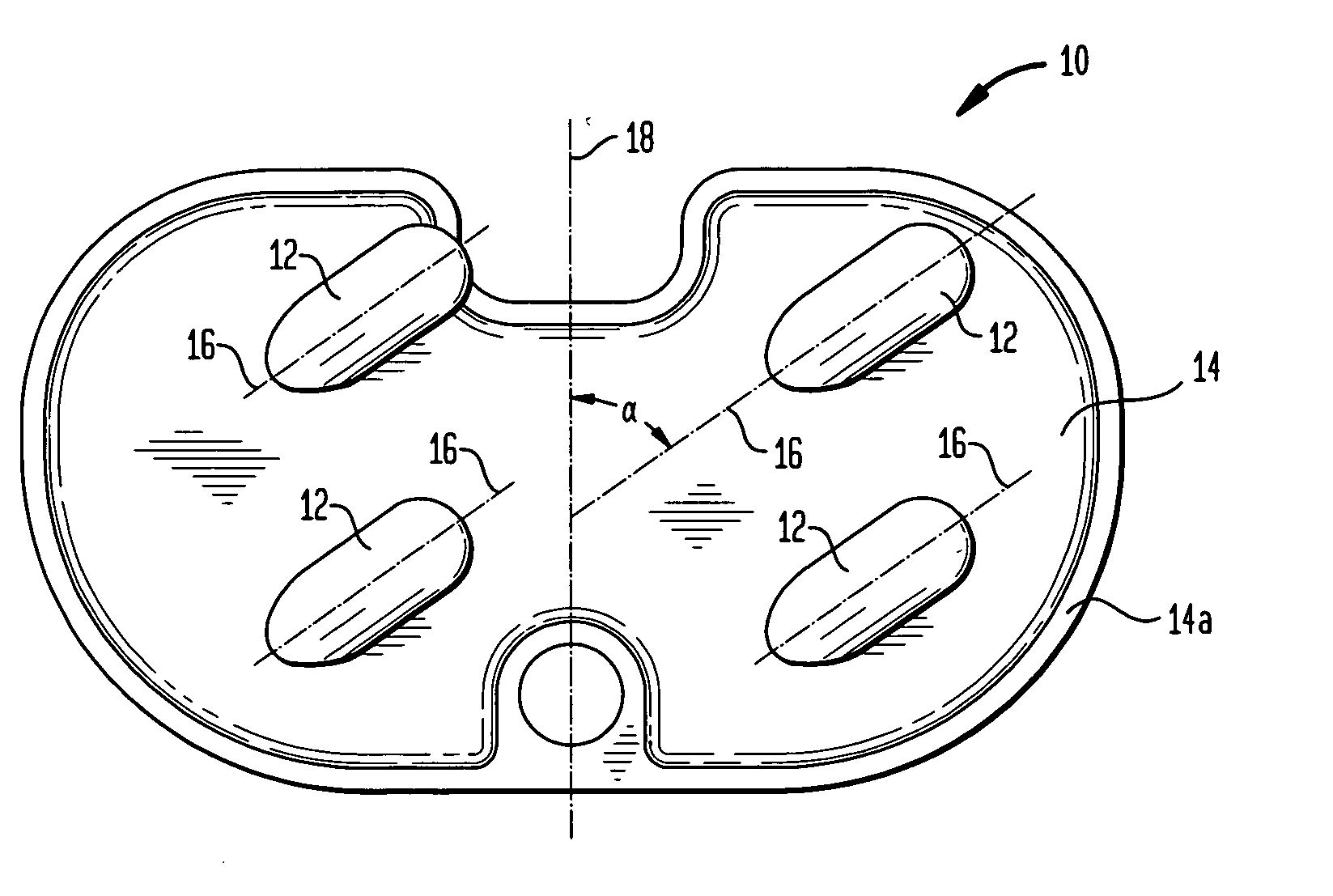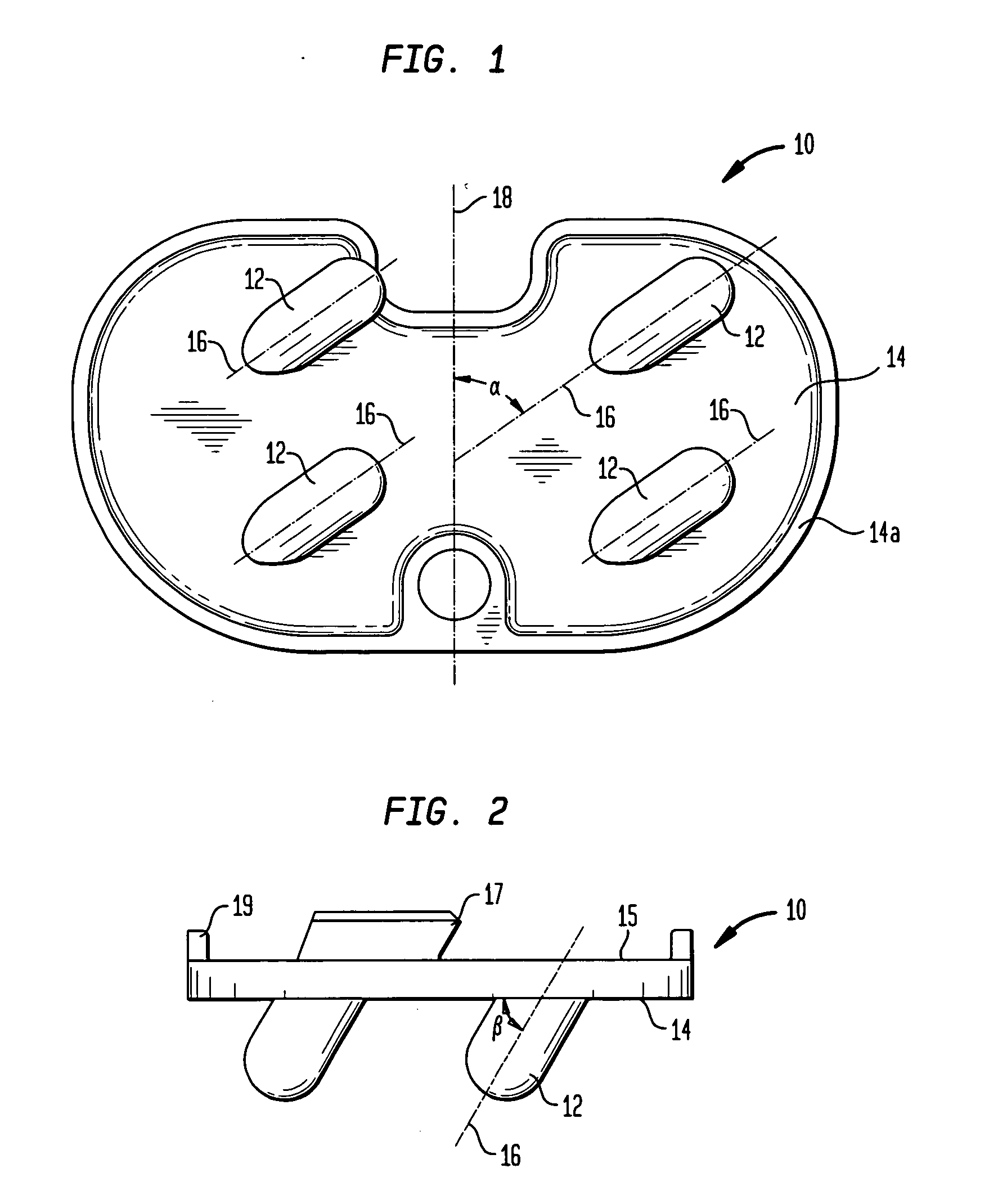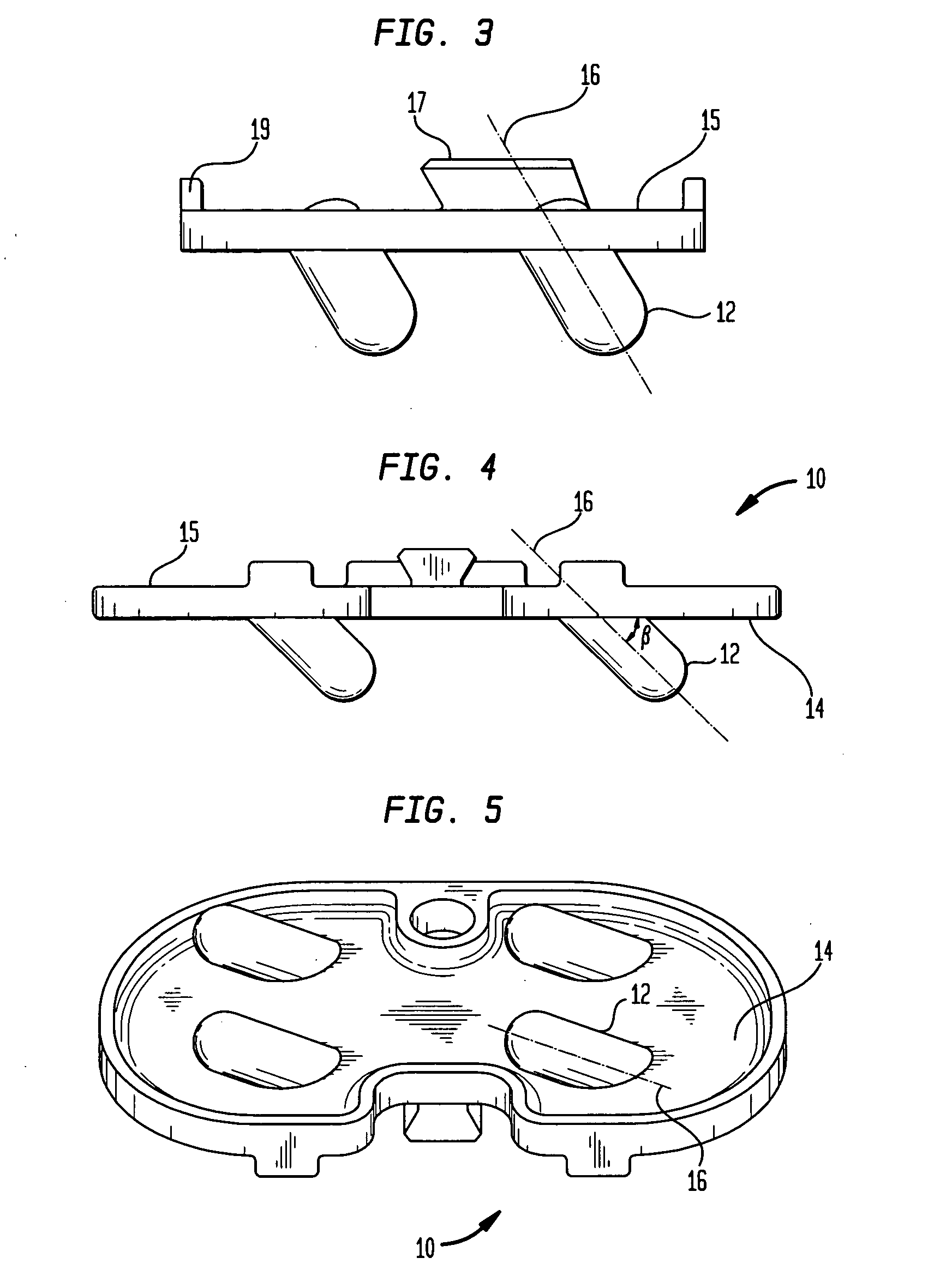Orthopedic implant with angled pegs
a technology of orthopedic implants and pegs, which is applied in the field of orthopedic implants, can solve the problems of requiring a significant amount of space above the prepared joint surface for up and down movement, and achieve the effect of facilitating implantation
- Summary
- Abstract
- Description
- Claims
- Application Information
AI Technical Summary
Benefits of technology
Problems solved by technology
Method used
Image
Examples
Embodiment Construction
[0025] Referring to FIGS. 1 and 5, there is shown a bottom view of a typical tibial baseplate 10 which, in the preferred embodiment, includes four pegs 12 mounted on a bottom bone contacting surface 14 of baseplate 10. Surface 14 may be surrounded by a rim 14a. Each peg 12 includes a longitudinal axis 16 which is angled with respect to an anterior-posterior plane 18 through baseplate 14. Pegs 12 are thus also at an angle with respect to the surface 14. Although four pegs are shown, only one, two or three pegs could be used.
[0026] As can be seen in FIG. 1, longitudinal axis 16 of pegs 12 is oriented with respect to α anterior-posterior plane 18 by an angle α. For convenience, α is measured as the acute angle the pegs make with plane 18. In the preferred embodiment, α varies between 5° to 90° with respect to the anterior-posterior plane. Note that at 90° the pegs extend either purely medially or purely laterally. At 5° the longitudinal axis 16 of the pegs is oriented 5° from plane 18...
PUM
| Property | Measurement | Unit |
|---|---|---|
| angle | aaaaa | aaaaa |
| angle | aaaaa | aaaaa |
| angle | aaaaa | aaaaa |
Abstract
Description
Claims
Application Information
 Login to View More
Login to View More - R&D
- Intellectual Property
- Life Sciences
- Materials
- Tech Scout
- Unparalleled Data Quality
- Higher Quality Content
- 60% Fewer Hallucinations
Browse by: Latest US Patents, China's latest patents, Technical Efficacy Thesaurus, Application Domain, Technology Topic, Popular Technical Reports.
© 2025 PatSnap. All rights reserved.Legal|Privacy policy|Modern Slavery Act Transparency Statement|Sitemap|About US| Contact US: help@patsnap.com



